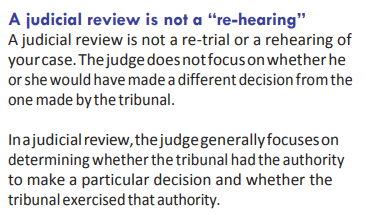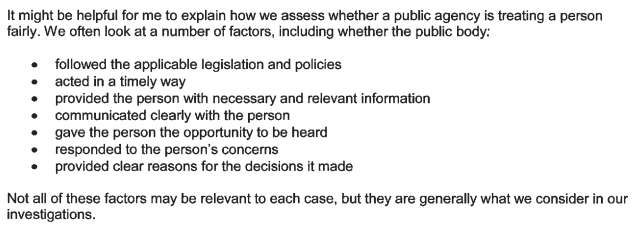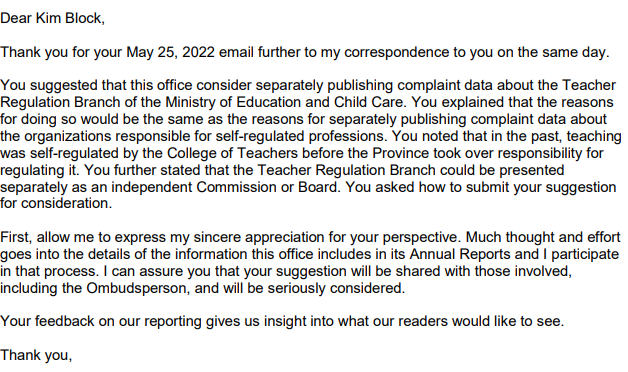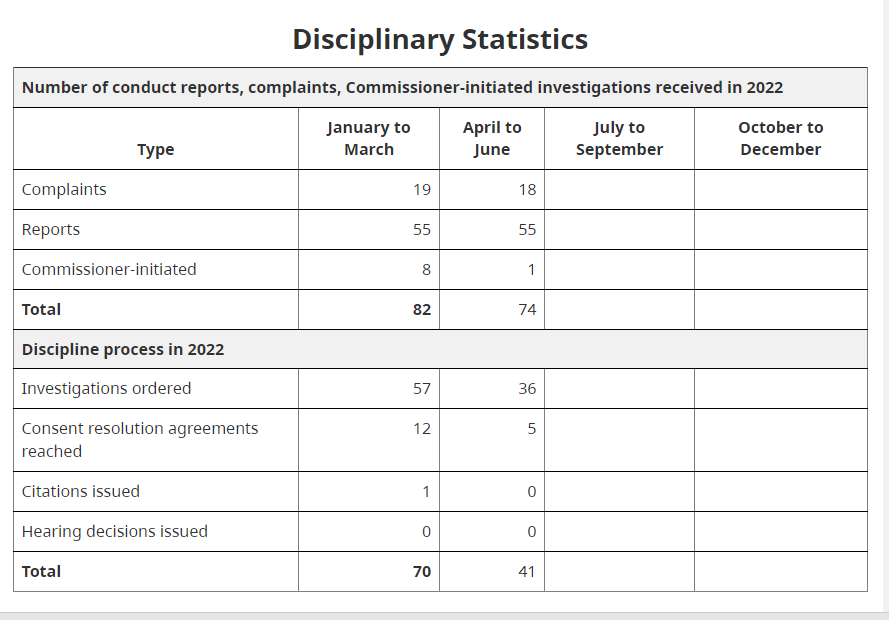This is a new case that was posted on the BC Human Rights Tribunal Website March 26th, 2024. This is a timeliness application.
I have read through this case and I feel MANY families can relate to the details of this case or various aspects of this case.
It really deserves a full read, however I have pulled some paragraphs to summarize and give an overview. The analysis of this case by the tribunal member and their determination of whether disability was connected to the harm alleged is really important learning for us parents. It also describes how the tribunal interprets alleged inappropriate accommodations as potential discrimination.
I am also going to be emailing this case to the Ministry of Education and asking them to explain why they are not screening children in Kindergarten. Dyslexia BC has been advocating for this for years!
The Parent obo the Child v. School District, 2024 BCHRT 91
[8] The Child attended an elementary school in the School District from September 2015 until December 2020. He has dyslexia, dysgraphia, and attention deficit hyperactivity disorder [ADHD].
[9] By the third week of kindergarten in 2015, the Parent alleges that the Child began complaining of constant nausea and experienced diarrhea and vomiting regularly. She states he told her that he was scared to go to school as the work was too hard and he could not do it. The Parent alleges that the Child’s physical ailments were only present on school days and he began resisting going to school, to the extent that he cried all evening before going to school and lay on the floor crying two to three hours before school. The Parent alleges this same pattern persisted throughout the entire time the Child attended the school.
[14] Around August 2018, before the Child started grade three, the Parent alleges that she asked his teacher if he may be dyslexic. The Parent says that the teacher assured her that her son’s situation was normal, and he just needed to keep practicing. The Parent says that she thought that by raising the possibility dyslexia to the teacher it would prompt the teacher to investigate the issue more thoroughly. The Parent says that she ultimately decided to trust the teacher’s opinion, which resulted in the Child not being appropriately accommodated for his disabilities.
[15] In September 2018, the School District conducted a functional behavioral assessment of the Child. Based on the assessment, in November 2018 the School District placed him in a literacy intervention group. The Parent alleges the placement was an inappropriate response to the Child’s disabilities.
[17] In December 2018, the School District created its first Individual Educational Plan [IEP] for the Child. The plan focused on addressing the goals of the Child attending school and managing his anxiety in a positive way at school. It also addressed various ways to increase his reading and writing to advance him from operating at a grade one level. The Parent alleges the IEP did not appropriately address the Child’s disabilities.
[18] In June 2019, the Parent alleges the Child’s IEP was updated with minimal change. She says that worksheets provided by the school over the summer were too hard for the Child to complete. Once again, the Parent alleges the School District’s attempts to accommodate the Child’s disabilities were inappropriate.
[25] In mid 2020, at the end of grade four, the Parent says that she realized the extent of the Child’s reading struggles as he could not read instructions or complete any online school without her providing him with extensive one-to-one support. She alleges his reading skills were much lower than the School District had previously indicated. At that point the Parent says she began doing in-depth research on dyslexia and other disabilities pertaining to reading. She then decided to pay for him to attend tutoring with literacy specialists outside of school.
[31] ……...The Parent stated that she felt incredibly rushed during a less than one hour meeting about the plan for the Child related to the new information and the complexity of the situation. She worried about several educators being involved who did not have training for children with the Child’s learning disabilities and processing challenges.…..
[34] Finally, the Parent noted her concern that as of grade three the School District had already started to consider the Child as not being a candidate for graduation with a high school diploma.
[37] In January 2021, the Parent says that the Child was enrolled in a private school equipped to meet his education needs. She says that at the new school, the Child received 45 minutes of OG tutoring at the new school every day with positive effects. By the time her complaint was filed in November 2021, she described him as a “different child” who did not complain about going to school and did not get headaches and have an upset stomach or diarrhea. The Parent says the Child was learning at grade level and was now being given the opportunity to be successful.
[49] After reviewing the information on file, I have further determined that there is a succession of separate acts of discrimination of the same character that are separate contraventions of the Code extending back to the spring of 2016. I address each allegation in turn.
[50] The Complaint alleges that on April 4, 2016, the Parent emailed the Child’s kindergarten teacher with his reports that he felt rushed when doing work at school, and despite his best efforts he felt he was too slow in completing tasks. The Parent asked the teacher if there was anything that could be done about this problem. The teacher responded with an acknowledgement that the Child did take his time with his work and appears to suggest that the Parent should reassure the Child that he could take time and not be so hard on himself. From my review of this event, I am satisfied that the Complaint sets out an allegation of discrimination where the Child accessing educational services experienced harms because the School District failed to accommodate the Child and did not meet his educational needs by only telling the Parent to tell the Child not to not rush or be too hard on himself. The harm incurred 12 by taking this action only was the Child not receiving a proper education. I am further satisfied the Complaint sets out an allegation that the School District failed to make sufficient inquiries into the nature and extent of the Child’s disability-related needs in response to the Parent’s concerns. In my view, this inaction caused harm where the School District failed to discover Child’s learning disabilities such that he could then be provided with appropriate accommodations to prevent him falling behind. In my view, the Complaint alleges that the Child’s disability was a factor in the harms alleged.
[51] The Complaint alleges that in November 2016, the School District’s response to the Child’s reading difficulties was to send home alphabet cards and provide video links for him to work on sounding out letters and creating simple words. From my review of this event, I am satisfied that the Complaint sets out allegations of discrimination where the School District failed to accommodate the Child by addressing his learning disability needs in this manner. I am further satisfied the Complaint sets out an allegation that the School District failed to make sufficient inquiries into the nature and extent of the Child’s disability-related needs as opposed to sending home alphabet cards and video links to address his needs. In my view, the Complaint alleges that the Child’s disability was a factor in the harms alleged. In my view, the Complaint alleges that the Child’s disability was a factor in the harms alleged.
[52] The Complaint alleges that in the fall of 2017, the School District addressed the Child’s ongoing reading problems by giving him sight cards to take home and providing him with some one-on-one reading support. At this time, the Parent noted her concerns that the Child was merely memorizing the cards and not actually able to spell the words. She also observed that he was guessing words based on pictures. I am satisfied that the Complaint sets out allegations of discrimination where the School District failed to accommodate the Child by addressing his learning disability needs in this manner. I am further satisfied the Complaint sets out an allegation that the School District failed to make sufficient inquiries into the nature and extent of the Child’s disability-related needs as opposed to sending home sight cards and providing some one-on-one reading support. In my view, the Complaint alleges that the Child’s disability was a factor in the harms alleged. 13
[53] The Complaint alleges that in August 2018, the School District’s response to the Parent’s concern that the Child might be dyslexic as he continued to struggle in school was to assure her that he just needed to keep practicing. I am satisfied that the Complaint sets out allegations of discrimination where the School District failed to accommodate the Child by addressing his learning disability needs in this manner in response to Parent’s concerns. I am further satisfied the Complaint sets out an allegation that the School District failed to make sufficient inquiries into the nature and extent of the Child’s disability-related needs as opposed to staying the course with Child despite ongoing problems and the Parent highlighting the possibility that he could be dyslexic. Once again, I find the Child’s disability was a factor in the harms alleged.
[54] The Complaint alleges that In the fall of 2018, the School District’s response to the Child’s ongoing learning struggles was to conduct a functional behavioural assessment and place him in a literacy intervention group. I am satisfied that the Complaint sets out allegations of discrimination where the School District failed to accommodate the Child by addressing his learning disability needs by focusing on the behavioural components and not his disabilities. I am further satisfied the Complaint sets out an allegation that the School District failed to make the appropriate inquiry, conducting a psychoeducational assessment instead of a behavioural assessment, into the nature and extent of the Child’s disability-related needs. Again, failing to accommodate the child after a proper assessment is alleged to have harmed him by not providing a proper education. I find the Child’s disability was a factor in the harms alleged.
[55] The Complaint alleges that in December 2018, the School District created its first IEP for the Child. I am satisfied that the Complaint sets out allegations of discrimination where the School District failed to accommodate the Child by addressing his learning disability needs with an IEP that focused on the behavioural components and provided ineffectual learning supports not indicated in the later psychoeducational assessment. Again, the School District is alleged to have failed to make the appropriate inquiry into the nature and extent of the Child’s disabilityrelated needs. It allegedly failed to accommodate the child after a proper assessment resulting in the harms related to not receiving a proper education. I find the Child’s disability was a factor in these harms. 14
[56] The Complaint alleges that in June 2019, the School District updated the IEP with minimal changes and sent worksheets home with the Child to do over the summer break that were allegedly beyond his capabilities. I am satisfied that the Complaint sets out allegations of discrimination where the School District failed to accommodate the Child by addressing his learning disability needs with a revised IEP that has the same issues as the first IEP. A further allegation is set out concerning sending home inappropriate worksheets over the summer. Once again, the School District is alleged to have failed to make the appropriate inquiry into the nature and extent of the Child’s disability-related needs. It allegedly harmed the Child by not providing him with a proper education. I find the Child’s disability was a factor in the harms alleged.
[57] The Complaint alleges that in September 2019, the Child’s grade four teacher admitted she was unaware of him having an IEP and provided him with grade two spelling lists work as an accommodation of his disability. I am satisfied that the Complaint sets out allegations of discrimination where the School District failed to accommodate the Child by addressing his learning disability needs by sending home grade two spelling lists for him to work on. Once again, the School District is alleged to have failed to make the appropriate inquiry into the nature and extent of the Child’s disability-related needs. It allegedly harmed the Child by not providing a proper education. I find the Child’s disability was a factor in the harms alleged.
[58] The Complaint alleges in February 2020, the School District’s lack of response to the Parent’s concern that the Child was reversing letters on his written tests is an allegation of discrimination. I am satisfied that the Complaint sets out allegations of discrimination where the School District failed to accommodate the Child by addressing his learning disability needs in the face of dyslexia symptoms. Once again, the School District is alleged to have failed to make the appropriate inquiry into the nature and extent of the Child’s disability-related needs. It allegedly harmed the Child by not providing a proper education. I find the Child’s disability was a factor in the harms alleged.
[59] The Complaint alleges on November 4, 2020, that the revised IEP implementing the October 27, 2020, psychoeducational report findings is an allegation of discrimination where it relied on the Parent to organize and pay for the Child’s OG tutoring and inappropriately 15 continued to focus on treating his anxiety. I am satisfied that the Complaint sets out allegations of discrimination where the School District failed to accommodate the Child by addressing his learning disability needs with a revised IEP not properly guided by the psychoeducational assessment resulting in the Child not receiving a proper education. I find the Child’s disability was a factor in the harms alleged.
[60] The Complaint alleges on November 5, 2020, that the school principal was unwilling to guarantee that the Child would receive tutoring from someone trained in OG tutoring is an allegation of discrimination for the purposes of this decision. I am satisfied that the Complaint sets out allegations of discrimination where the School District failed to accommodate the Child by committing to provide him with an appropriately trained tutor necessary to meet his learning disability needs. This resulted in the Child not receiving a proper education. I find the Child’s disability was a factor in the harms alleged.
[61] To summarize, the materials before me set out a series of discrete allegations of discrimination incidents involving the School District’s repeated failures to appropriately accommodate the Child’s disability over the five years that he attended school within the School District. These incidents involved the trial of various inappropriate intervention activities, inappropriate IEPs and an inappropriate assessment. All these actions attempting to address the Child’s learning disabilities allegedly resulted in harms related to the Child not receiving a proper education. Further, for much of the period in question, the School District failed to make the appropriate inquiry into the nature and extent of the Child’s disability related needs by way of a psychoeducational assessment.
[65] In concluding there were no significant gaps in this case, I have considered the Parent’s submissions and evidence indicating she was actively engaged in the Child’s education during his time out of school over the years. For example, she participated extensively in the take home activities prescribed by the School District while actively pursuing guidance from his teachers, the school counsellor, and the principal. In my view, the Parent remained very much engaged in the accommodation process throughout the years and this lessens the significance of any gaps between the discrete instances of discrimination outlined above. As an active participant in the School District’s ongoing accommodation of the Child’s learning disabilities, I see less significance in the gaps of months between the discrete allegations. While it is possible 17 to say the Parent had numerous opportunities to file a complaint, the information before me indicates that she was actively engaged as a participant in the accommodation process between events where the issue of accommodation arose, which lessens the significance of the gaps in this case.
[67] For these reasons, the complaint is accepted for filing as it alleges a continuing contravention of the Code.





